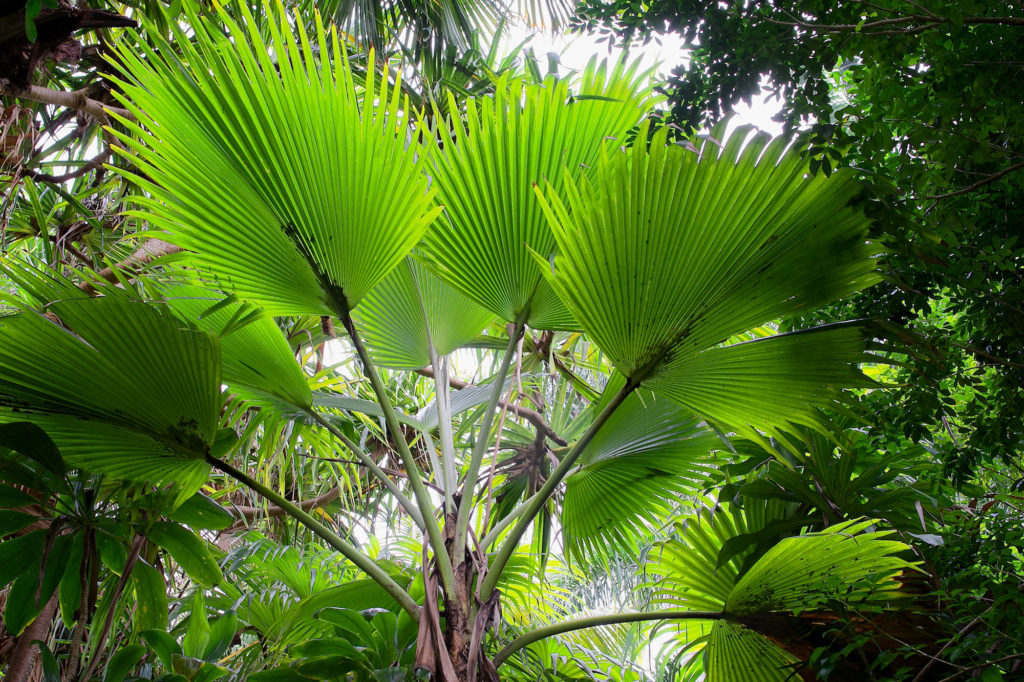
Pritchardia hillebrandii
The Pritchardia hillebrandii, or Molokai fan palm, is endemic to the island of Molokai where it grows along the northeastern coastline at elevations of 100 to 1900 feet, meaning it can be found nowhere else in the world. Known as the Loulu lelo (or “yellowish loulu”) to the Hawaiians, this native tree species is at risk in the wild. Today, the habitat is limited mainly to the tops of islets Huelo and Mokapa located off the north coast of Molokai.
Nineteen different species of Loulu are native to the Hawaiian Islands, with types distinctly native to each of the islands, and some islands having more than one type. Each species is unique to a mountain, valley, or particular area on their native island. Depending on the species, they can be as short as 4 ft. to up to a 100 ft. tall.
With broad, fan-shaped leaves with silvery undersides, the Loulu lelo flowers in a beautiful golden yellow, followed by black, marble-sized fruit. These fruits can be peeled and eaten (and taste somewhat like a coconut), and were once a source of food for early Hawaiians. The fronds were used to weave hats. The trunks were used in construction, leaves used as umbrellas, thatching, and also in a cliff jumping.
Loulu were once one of the most common native plants in Hawaii, but none of the 19 species are common these days and they are considered to be at risk. The last existing forest of Loulu lelo is located on an old “sea stack” or islet off of the Molokai coast, which is surrounded by water and therefore protected from grazing animals.
Unfortunately, in the wild loulu habitats, there have been many introduced animals that prey on their seeds and seedlings. Rats love to eat the seeds while still on the tree and on the ground. Pigs and goats eat the seeds and seedlings, so you don’t see many loulu in the forests today. Weeds can also easily out compete them.